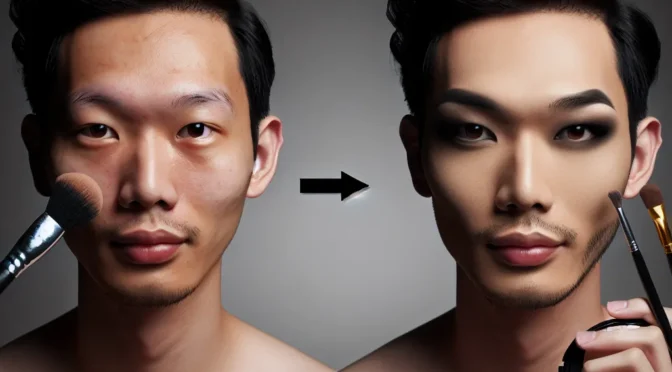The Neurological Effects of Mindfulness Meditation
Mindfulness meditation has gained popularity in recent years as a technique for reducing stress, improving mental well-being, and enhancing overall cognitive function. One aspect of mindfulness meditation that has intrigued researchers is its neurological effects on the brain.
Studies have shown that regular practice of mindfulness meditation can lead to changes in the brain’s structure and function. One area of the brain that has been of particular interest is the prefrontal cortex, which is associated with attention, self-awareness, and emotion regulation. Research indicates that mindfulness meditation can actually increase the density of gray matter in the prefrontal cortex, which may explain its positive effects on attention and self-regulation.
Furthermore, mindfulness meditation has been found to impact the amygdala, a key player in the brain’s stress response. Through regular practice, individuals have demonstrated reduced amygdala activity, leading to decreased reactivity to stress and negative emotions. This suggests that mindfulness meditation may have a direct impact on how the brain processes and responds to stressors.
Additionally, studies have shown that mindfulness meditation can influence the brain’s default mode network, which is responsible for mind-wandering and self-referential thoughts. Regular practitioners of mindfulness meditation have exhibited decreased activity in this network, indicating a reduction in ruminative thinking and an enhanced ability to stay present in the moment.
These findings suggest that mindfulness meditation can induce neuroplastic changes in the brain, leading to improved attention, emotion regulation, and stress resilience. Further research in this field may provide additional insights into the underlying neurological mechanisms of mindfulness meditation and its potential for promoting overall well-being.
Understanding the Psychological Benefits of Mindfulness
Mindfulness meditation has gained significant attention in recent years due to its potential psychological benefits. Understanding the psychological aspects of mindfulness can shed light on why this ancient practice is becoming increasingly popular in modern psychology. Research suggests that mindfulness meditation can lead to positive changes in various psychological domains, including stress reduction, emotional regulation, and increased overall well-being.
One of the key psychological benefits of mindfulness meditation is its impact on stress reduction. By focusing on the present moment without judgment, individuals can learn to let go of stressful thoughts and worries, leading to a reduction in perceived stress levels. Studies have demonstrated that regular mindfulness practice can lower cortisol levels, a hormone associated with stress, thereby promoting a greater sense of calm and relaxation.
In addition to stress reduction, mindfulness meditation has been linked to improved emotional regulation. Practitioners often report enhanced self-awareness and the ability to observe their emotions without becoming overwhelmed by them. This heightened emotional awareness can lead to better control over impulsive reactions and a greater sense of emotional balance.
Furthermore, the practice of mindfulness has been associated with increased overall well-being. Research indicates that engaging in mindfulness meditation can lead to greater life satisfaction, positive mood states, and a general sense of happiness. This can be attributed to the cultivation of a non-judgmental and accepting attitude fostered through mindfulness practice, which allows individuals to approach their experiences with greater equanimity.
Understanding the psychological benefits of mindfulness meditation provides valuable insights into its potential for promoting mental and emotional wellness. By incorporating mindfulness into daily routines, individuals may experience improvements in stress management, emotional regulation, and overall life satisfaction, contributing to a greater sense of psychological well-being.
The Impact of Mindfulness on Stress and Anxiety Reduction
Mindfulness meditation has gained significant attention in recent years due to its powerful impact on stress and anxiety reduction. Research has consistently shown that practicing mindfulness can lead to a decrease in the body’s stress response and a reduction in symptoms of anxiety. This is achieved through a variety of mechanisms, including the regulation of the body’s stress hormones, such as cortisol, and the activation of the parasympathetic nervous system, which promotes relaxation and a sense of calm.
One study published in the Journal of Consulting and Clinical Psychology found that individuals who underwent mindfulness-based stress reduction training showed significant reductions in perceived stress and trait anxiety, as well as an increase in self-compassion and overall well-being. These findings highlight the transformative potential of mindfulness meditation in addressing the pervasive issues of stress and anxiety in modern society.
Furthermore, neuroimaging studies have demonstrated that regular mindfulness practice can lead to structural changes in the brain, particularly in areas associated with emotion regulation and self-awareness. These changes may contribute to the long-term resilience against stress and anxiety, providing individuals with the tools to navigate life’s challenges with greater ease.
In conclusion, the science behind mindfulness meditation firmly supports its role in reducing stress and anxiety. By fostering a present-moment awareness and cultivating a non-judgmental attitude, mindfulness equips individuals with the ability to manage stressors more effectively and diminish the grip of anxiety on their lives.










